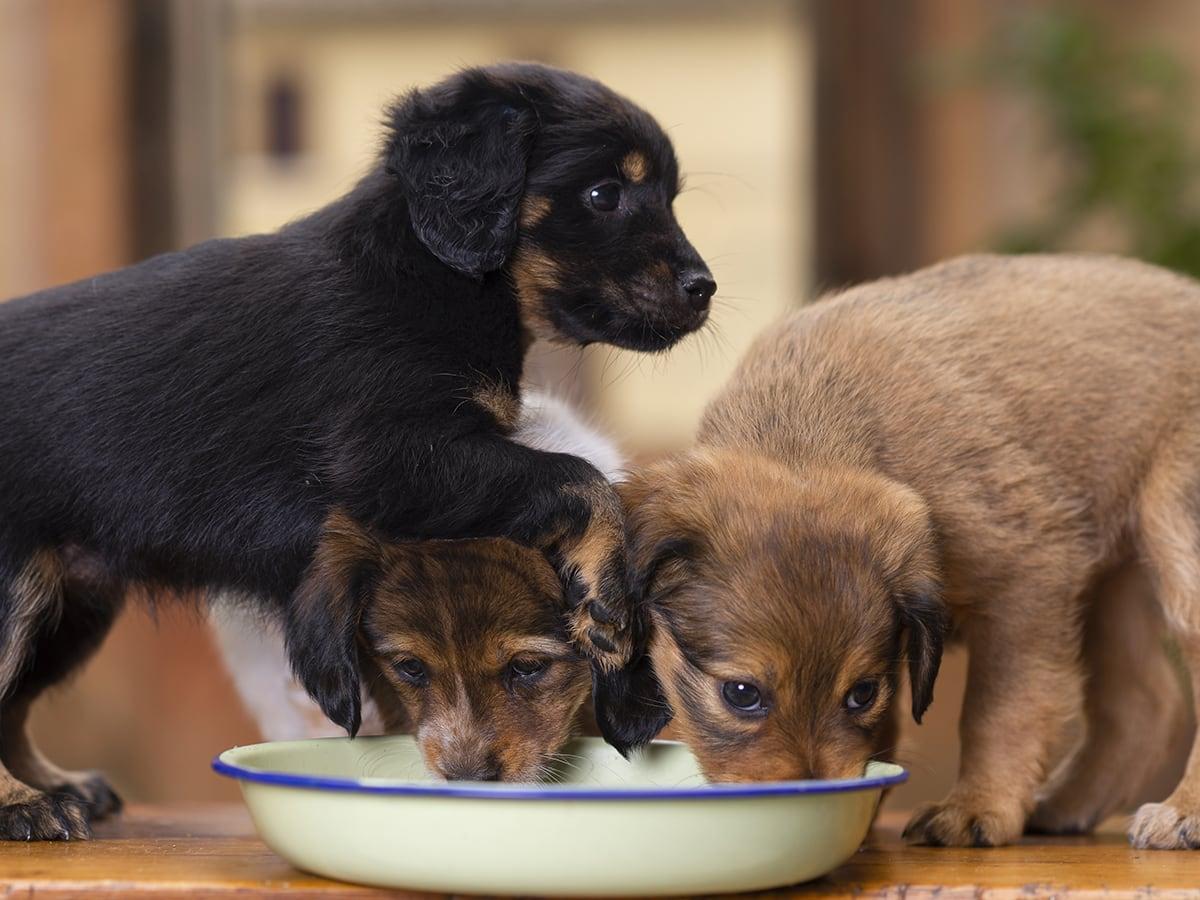You can encourage your dog to drink more water using multiple techniques like placing multiple water bowls in areas where they spend more time and more. We’ve listed some more unique and interesting ways for you.
Introduction
If dogs had the same obsession with hydration as they do with sniffing every blade of grass in the park, we wouldn’t need to have this conversation. It’s funny when we’ve seen some pups looking at their bowl of water as the most mysterious thing in the world and then happily gulping down puddles and toilet water.
Many dog owners don’t realize this is a big issue but being hydrated is extremely important for your dog’s body in multiple ways. It is not just about avoiding a dry mouth but ensuring good digestion, body temperature regulation and overall wellbeing.
You don’t seem to be one of those dog owners because of the very fact that you searched this on your browser. Luckily, you’ve landed on the right page. We understand how difficult it can be to encourage your dog to drink more water at times even when it feels like they are severely dehydrated.
Dehydration can be a severe medical issue for dogs. If left untreated, it can cause severe organ damage and even death in extreme cases. If you see dry gums, thick saliva, loss of skin elasticity, lethargy, and/or loss of appetite in your dog, there is a chance that they are dehydrated. It can be caused by loss of fluid because of vomiting, diarrhea or panting, a heat stroke, fever, or even a serious medical condition like kidney failure, diabetes, etc., that causes passing urine more frequently and in larger volumes than normal. (2)
Why Hydration is Important for Dogs
While dehydration is a major risk of keeping your dog hydrated at all times as it can lead to severe problems like kidney problems and urinary tract infections, hydration plays a very key role in a dog’s day-to-day functioning. It includes the functioning of the kidney, lubricating joints, easing digestion and maintaining body temperature.
Why is my dog not drinking enough water?
You may argue that it’s not like dogs don’t understand when they are thirsty or if they forget to drink water. Yes, that’s true, but there can be certain reasons why your dog is not feeling like drinking water. They include – (1)
Illness – Conditions like bladder infection, stomach upset, kidney disease, etc., can demotivate dogs from drinking water as they are in pain and discomfort.
Throat problems – Dental issues like gum disease, tooth abscess or an injury to the throat or jaw may also keep your dog away from water. It could also be something as severe as mouth cancer.
Environmental changes – More water intake during summers and less during winters is completely normal. More thirst on days of more activity and vice versa is also very normal. (Isn’t that what you do as well?)
Changes in water – While dogs have fewer taste buds than us, they clearly remember how their usual water tastes. If the source changes for some reason or if the water is contaminated, your dog may sense it and not feel like drinking.
Anxiety – Things such as changes in routine, being chased by another dog, owner being away for too long, loud noises, etc., can create stress and anxiety in your dog. This can make them lose their appetite for food and water.
And yes, your dog, just like a little human toddler, can be fussy about drinking water too. However, most of the time there are reasons behind the tantrum that we can’t notice. They include noise or smells around their water bowl, new water bowl, etc.
How much water should a dog have in a day?
One size (or, in this case, glass) doesn’t fit all. The ideal daily water intake for dogs depends totally on the size, age, activity levels, weather and even their diet. The general rule here is 40–60ml of water per kilogram of body weight a day. (1)
To put this into perspective, a small dog like a Pug or a Yorkie, that typically weighs around 6 kgs, should drink around 300ml water in a day. Big ones like a Labrador or a German Shepherd should drink around 1.5l a day as they typically weigh around 30 kgs.
Moreover, more active dogs should have more water than the ones who spend more time on their owner’s laps. The ones who are on a dry kibble diet should also drink more than the ones who eat wet kibble.
Tips for Encouraging Your Dog to Drink More Water
Once you’ve identified the reason behind your dog not drinking water, it’s time to address it. Here are some ways you can encourage your dog to drink more water -
Water water everywhere:
Change water multiple times a day to keep it fresh and appealing.
Place water bowls in different areas around the house so it’s always within reach.
Water Fountain: Some dogs may prefer running water. A pet water fountain can make drinking more engaging.
Water to the food bowls:
If your dog is on dry kibble, you could add a bit of water to soften it.
In the case of wet food, mix in a small amount of water to increase their intake naturally.
Ice it up: Yes, you can give your dog small cubes of ice to chew. It can hydrate your dog and also act as a nice treat for them on a hot sunny day. Do make sure to give tiny pieces only and not very frequently.
What-a-water: You can add low-sodium chicken broth or a splash of unsweetened coconut water to make it more enticing. Do not make it a regular practice, though or else it’ll feel like spoiling your kid.
The right bowl:
Some dogs are sensitive to bowl type. You could try stainless steel or ceramic bowls as they are the most used ones by pet owners.
You can even try and experiment with bowl size and shape to see if they have a preference. Whatever you try, make sure you wash the bowl after every use. No one likes to drink water from a dirty bowl. (Yes, we know it’s an irony when you see your dog enjoying the mud water from the ground).
Create a Routine Around Drinking: Create a habit of drinking water immediately after a physical activity, like a walk, as they are thirstier then and will drink without much fuss.
Yes, we know that taking care of a dog is no less than taking care of a baby. One needs to go through all the tantrums. But then, all the love and cuddles make it all worth it.
When to Consult a Vet
If your dog has not been drinking enough water, simply because you’ve changed the bowl or if it’s cold outside then warming the water a little or rewarding your dog for drinking water may work. But as we saw, sometimes it’s not a fuss but a severe underlying medical condition causing the loss of appetite for water in dogs. So, if you see signs of dehydration in your dog (mentioned above), you should consult a vet immediately and diagnose the root cause.
You may see that some of the illnesses can be really expensive to treat here. But don’t worry. We’ll help you with that.
Conclusion
Staying hydrated is extremely important for both you and your dog, and not just to avoid a dry mouth but to ensure routine bodily functioning. You can use one or more of the techniques mentioned above to encourage your dog to drink more water. However, the loss of appetite for water could be due to an underlying serious medical condition. You need to keep an eye on the symptoms of dehydration and consult a vet at the earliest if you see any.
The best way to prevent dehydration is to create a habit of drinking water. Dogs are routine lovers. Don’t wait for your dog to get thirsty to drink water. Instead, create a routine around it. By the way, it goes for you as well!
How can we at Spot Pet Insurance can help?
Dog Insurance can help provide financial assistance for eligible veterinary care in case of unexpected accidents, illnesses, or injuries. Our plans can help pet parents manage the eligible costs of covered veterinary care and help ensure that their pets can receive the best treatment possible. Here are some ways that Spot pet insurance plans can help:
Covers Unexpected Veterinary Costs: Spot pet insurance plans cover the eligible costs of unexpected veterinary treatments, such as emergency surgeries, X-rays, and prescription medications for covered conditions.
Customizable Plans: Choose your annual limit, reimbursement rate, and deductible from a range of options, and create the plan that will fit the needs of your pet and your budget.
Peace of Mind: With Spot pet insurance plans, pet parents can know that they can provide the best care for their pet with less worry about the cost.
To learn more about Spot Plans or to get a free quote, click here.

Creative manager by day, pet enthusiast all the time! After 19 years with my dog (hopefully he wins the award for oldest pet in the world), I enjoy spending my days brainstorming tail-wagging content, and sniffing out the latest trends in the pet world.
Vets Now. (2024, May 17). Dehydration in dogs: Critical signs, causes, and treatment. https://www.vets-now.com/pet-care-advice/dehydration-in-dogs/
Vets Now. (2024, May 17). Dehydration in dogs: Critical signs, causes, and treatment. https://www.vets-now.com/pet-care-advice/dehydration-in-dogs/












